- Home
- Michael Crichton
Dragon Teeth Page 8
Dragon Teeth Read online
Page 8
“Who cares where they’re supposed to be?” Cookie said. “They’re here, and so are we. It’s that Little Weasel, he led us here—”
“That’s enough. Let’s go about our business,” Cope said. “Make our camp, and act naturally.”
“After you, Professor,” Cookie said.
It was difficult to act naturally with a thousand teepees spread on the plains below, and the associated horses, fires, people. They had of course already been spotted; some of the Indians were pointing and gesturing.
By the time they had unloaded the cook wagon and started the fire for the night, a group of mounted horsemen splashed across the stream and rode up toward their camp.
“Here they come, boys,” Cookie muttered.
Johnson counted twelve riders. His heart pounded as he heard their horses approach. They were superb horsemen, riding fast and easily, trailing a cloud of dust. They whooped and shouted savagely as they came closer.
“These were my first Indians,” he later remembered, “and I was consumed in equal parts with curiosity and terror. I confess that to see the swirling dust cloud, and hear their savage shrieks, increased the latter, and for the thousandth time on this journey I regretted the rashness of my wager.”
The Indians were now close and rode in circles around the wagon, whooping enthusiastically. They knew the white men were frightened, and enjoyed it. Finally, they drew up, and their leader repeated several times, “Howah, howah.” He said it in a grunting sort of way.
Johnson whispered to Sternberg, “What did he say?”
“He said, ‘How.’”
“What does that mean?”
“It means, ‘I agree, everything is fine, I feel friendly.’”
Johnson could now see the Indians clearly. Like many other first-time observers of Plains Indians, he was astonished at how handsome they were—“tall and muscularly endowed, their faces possessing pleasing regular features, their bearing naturally dignified and proud, their persons and buckskin garments surprisingly clean.”
The Indians were not smiling, but they seemed friendly enough. They all said “Howah” in turn, and looked around at the camp. There was an awkward silence. Isaac, who knew some Indian language, ventured a few words of greeting.
Instantly their faces darkened. They wheeled on their horses and rode away, disappearing in an alkaline dust cloud.
Sternberg said, “You goddamn fool, what did you say?”
“I said, ‘I bid you welcome and wish you success and happiness in the journey of your life.’”
“What’d you say it in?”
“Mandan.”
“You goddamn fool, Mandan’s Sioux talk. Those’re Crows!”
Even Johnson had been long enough in the plains to know of the traditional enmity between the Sioux and the Crow tribes. The hatred between them was deep and implacable, especially since in recent years the Crows had allied themselves with the white soldiers in the fight against the Sioux.
“Well, Mandan’s all I know,” Isaac protested, “so I said it.”
“You goddamn fool,” Sternberg repeated. “If we didn’t before, now we have a problem.”
“I thought Crows never killed white people,” Morton said, licking his lips.
“That’s what the Crows say,” Sternberg said, “but they tend to exaggerate. Oh yes, lads, we have a problem.”
“Well, we’ll go down there and straighten it out,” Cope said, in his usual forthright manner.
“After our last supper?” Cookie said.
“No,” Cope said. “Now.”
The Indian Village
Aboriginal peoples had hunted on the Western plains of America for more than ten thousand years. They had seen the glaciers recede and the land become warm; they had witnessed (and perhaps accelerated) the disappearance of the great mastodons, the hippo, and the feared saber-toothed tiger. They had hunted when the land was heavily forested, and they hunted now that it was a sea of grass. Through all the thousands of years, through all the changes of game and climate, Indians had continued to live as nomadic hunters on the vast spaces of the land.
The Plains Indians of the nineteenth century were colorful, dramatic, mystical, warlike people. They captured the imagination of all who saw them, and in many ways they stood, in the popular mind, for all American Indians. The antiquity of their rituals, the intricate organization of their way of life, was much admired by liberal thinkers.
But the truth was that the Plains Indian society that Westerners saw was hardly older than the white American nation that now threatened its existence. The Plains Indians were a nomadic hunting society organized around the horse, as were the Mongols of Asia. Yet there had been no horses in America until the Spaniards introduced them three hundred years earlier, changing Plains Indian society beyond recognition.
And even the traditional tribal structures, and tribal rivalries, were less ancient than often imagined. Most authorities believed the Crow Indians were once part of the Sioux nation, living in what is now Iowa; they had migrated west toward Montana, evolved a separate identity, and become the implacable antagonists of their former kin. As one expert wrote, “The Sioux and the Crow are virtually the same in dress, manner, habits, language, customs, values, bearing. This similarity might be thought to form the basis of friendship, yet it only heightens their antagonism.”
It was these Crow Indians that they now rode down to visit.
First impressions of an Indian village were often contradictory. Henry Morton Stanley, the Welsh explorer and journalist who in 1871 famously found Dr. David Livingstone in Africa, entered Black Kettle’s village with Custer and found it filthy: “so foul, indeed, as to defy description.” Robes on the teepee floors were crawling with vermin; excremental odors assailed him.
Other first-time observers were unnerved to see Indians roasting a dog over a fire, or chewing bloody buffalo steaks. But Johnson’s first impressions, riding that evening into the Crow village, seem more revealing about him than about the Crow:
“Anyone who imagines,” he wrote,
that the nomadic Indian lives a free-spirited and open life will receive a rude shock on visiting his place of habitation. The Plains Indian village is, like the life of the warrior, regimented in the extreme. Teepees are regularly designed of elk hide, regularly set out, and regularly arranged according to fixed rules; there are rules for placement of the (back) rests inside the teepees, and rugs, and rawhide containers; there are rules for the designs that decorate the robes and clothes and teepees; rules for the making of fires and the manners of cooking; rules for the behavior of the Indian at every moment and at all times in his life; rules for war and rules for peace and rules for hunting and rules for behavior before hunting; and all these rules are followed with a rigid fixity and a serious determination which forcibly reminds the observer that one is among a warrior race.
They tethered their horses at the edge of the village and walked in, slowly. Curious stares greeted them from every side; laughing children fell silent, paused to watch the strangers pass; odors of cooking venison and the peculiar pungency of drying hides assaulted their nostrils. At length a young brave came up and made some elaborate movements with his hands.
“What’s he doing?” whispered Johnson.
“Sign language,” Toad said, cradling his swollen arm with the other.
“You understand it?”
“No,” Toad said.
But Little Wind did, and he spoke to the brave in the Crow language. The Indian led them deeper into the village, to a large teepee where five older warriors sat around a fire in a semicircle.
“The chiefs,” Toad whispered. At a gesture from one, the white men all sat in a semicircle facing them.
“Then began,” wrote Johnson,
the most protracted negotiations I ever experienced in my life. The Indians love to talk and are in no rush. Their curiosity, the formal elaborateness of ceremonial speech, and the lack of urgency with regard to time peculiar to them
, all conspired to a meeting of acquaintance that clearly would take all night. Everything was discussed: who we were (including our names, and the meaning of our names); where we had come from (the cities, the meanings of the names of cities, what routes we had taken, how we had chosen the route, and what experiences we had had on our journey); why we were here (the reason for our interest in the bones, and how we planned to excavate them, and what we planned to do with them); what we were wearing as clothing and why, the meaning of rings and trinkets and belt buckles, and so on ad infinitum et ad nauseam.
If the powwow seemed interminable, it must have in part been because of the tension the whites felt. Sternberg noted that “they didn’t care overly for our answers.” It soon emerged that they knew about Cope, had been told that he was unfriendly to Indians, and had killed his own father. The Crow had been advised to kill him in turn.
Cope was furious, but kept his temper. Smiling pleasantly, he said to the others, “Do you see the villainy, the black scoundrel’s techniques, finally exposed to all eyes? Do I harass Marsh? Do I attempt at every juncture to impede his progress? Am I jealous of him? I ask you. I ask you.”
The chiefs could tell that Cope was upset, and Little Wind hastened to assure them of an error.
The Indians insisted there was no error: Cope had been described well and true.
Who has said these things about him? Little Wind asked.
Red Cloud Agency.
Red Cloud Agency is a Sioux agency.
This is so.
The Sioux are your enemy.
This is so.
How can you believe the words of an enemy?
The discussion dragged on, hour after hour. At length, to control his temper or perhaps his nerves, Cope began to sketch. He drew the chief, and the likeness aroused great interest. The chief wanted the sketch, and Cope gave it to him. The chief wanted Cope’s pen. Cope refused.
“Professor,” Sternberg said, “I think you’d better give him your pen.”
“I will do nothing of the sort.”
“Professor . . .”
“Very well.” Cope handed over the pen.
Shortly before dawn, the discussion turned from Cope to Toad. Some kind of new chief was called for, a very pale, very thin man with a wild look in his eyes. His name was White Deer. White Deer looked at Toad, and muttered something, and left.
The Indians then announced they wanted Toad to remain in the camp, and for the others to leave.
Cope refused.
“It’s all right,” Toad said. “I will serve as a kind of hostage.”
“They may kill you.”
“But if they kill me,” Toad pointed out, “they’ll almost certainly kill all of you soon after.”
In the end, Toad remained, and the others left.
From their camp, they looked down on the Indian encampment as dawn broke. The braves had begun whooping and riding in circles; a large fire was being built.
“Poor Toad,” Isaac said. “They’ll torture him for sure.”
Cope watched through his glass, but the smoke obscured everything. Now a chanting began; it kept up until nine in the morning, when it abruptly stopped.
A party of braves rode up to the camp, bringing Toad with them on a spare horse. They came upon Cope washing his false teeth in a tin bowl. The Indians were entranced and, before Toad dismounted, insisted that Cope pop his lifelike teeth in and then take them out again.
Cope did this several times, contrasting a dazzling smile with a gaping, toothless hole, and the Indians departed much entertained.
Dazed, Toad watched them go.
“That one chief, White Deer, did magic on my hand,” he said, “to cure it.”
“Did it hurt?”
“No, they just waved feathers over it and chanted. But I had to eat some awful stuff.”
“What stuff?”
“I don’t know, but it was awful. I’m very tired now.” He curled up beneath the wagon, and slept for the next twelve hours.
Toad’s arm was improved the following morning. In three days he was cured. Each morning, the Indians would ride up to see Cope. And they would watch Funny Tooth wash his teeth. The Indians would often hang around the camp, but they never took anything. And they were very interested in what the whites were doing: finding bones.
Bone Country
With these preliminary problems resolved, Cope was impatient to begin the work. The students found him standing in the dawn chill, glancing up at the cliffs near the camp, which were being struck with light for the first time that day. Abruptly, he leapt up and said, “Come along, come along. Quickly now, this is the best time to look.”
“Look for what?” the students asked, surprised.
“You’ll know soon enough.” He led them to the cliff face exposure nearest the camp and pointed. “See anything?”
They looked. They saw bare, eroded rock, predominantly gray in color with pink and dark gray striations highlighted in the weak morning sunlight. That was all they saw.
“No bones?” Cope asked.
Encouraged by this hint, they looked hard, squinting in the light. Toad pointed. “How about up there?”
Cope shook his head. “Just embedded boulders.”
Morton pointed. “Near the rise there?”
Cope shook his head. “Too high, don’t look up there.”
Johnson tried his luck. “Over there?”
Cope smiled. “Dead sagebrush. Well, it seems you can see everything but the bones. Now: look in the middle of the cliff, for a cliff this high will have its Cretaceous zone near the middle—a lower cliff, it might be nearer the top—but this one, it will be in the middle—just below that pink striation band there. Now run your eye along the band until you see a kind of roughness, see there? That oval patch there? Those are bones.”
They looked, and then they saw: the bones caught the sunlight ever so differently from the rock, rounded edges more muted than jagged stone, their color a shade different. Once pointed out, it became easy: they saw another patch there—and more there—and there again—and still more. “We realized,” wrote Johnson,
that the entire cliff face was fairly stuffed to bursting with bones, which previously were invisible to us, yet now were as plain as the nose on your face. But as Professor Cope says, we had to learn to recognize the nose on your face, too. He likes to say, “Nothing is obvious.”
They were discovering dinosaurs.
In 1876, scientific acceptance of dinosaurs was still fairly recent; at the turn of the century, men did not suspect the existence of these great reptiles at all, although the evidence was there to see.
Back in July 1806, William Clark, of the Lewis and Clark Expedition, explored the south bank of the Yellowstone River, in what would later become Montana Territory, and found a fossil “semented [sic] within the face of the rock.” He described it as a bone three inches in circumference and three feet in length, and considered it the rib of a fish, although it was probably a dinosaur bone.
More dinosaur bones were found in Connecticut in 1818; they were believed to be the remains of human beings; dinosaur footprints, discovered in the same region, were described as the tracks of “Noah’s raven.”
The true meaning of these fossils was first recognized in England. In 1824, an eccentric English clergyman named Buckland described “the Megalosaurus or Great Fossil Lizard of Stonesfield.” Buckland imagined the fossil creature to be more than forty feet long, “and with a bulk equal to that of an elephant seven feet high.” But this remarkable lizard was considered an isolated specimen.
The following year, Gideon Mantell, an English physician, described “Iguanodon, a newly-discovered Fossil Reptile.” Mantell’s description was based largely on some teeth found in an English quarry. Originally the teeth were sent to Baron Cuvier, the greatest anatomist of his day; he pronounced them the incisors of a rhinoceros. Dissatisfied, Mantell remained convinced that “I had discovered the teeth of an unknown herbivorous reptile,”
and eventually demonstrated that the teeth most resembled those of an iguana, an American lizard.
Baron Cuvier admitted his error, and wondered: “Do we not have here a new animal, an herbivorous reptile . . . of another time?” Other fossil reptiles were unearthed in rapid succession: Hylaeosaurus in 1832; Macrodontophion in 1834; Thecodontosaurus and Paleosaurus in 1836; Plateosaurus in 1837. With each new discovery came the growing suspicion that the bones represented a whole group of reptiles that had since vanished from the earth.
Finally, in 1841, another physician and anatomist, Richard Owen, proposed the entire group be called Dinosauria, or “terrible lizards.” The notion became so widely accepted that in 1854, full-size reconstructions of dinosaurs were built in the Crystal Palace in Sydenham, and attained wide popularity with the public. (Owen, knighted by Queen Victoria for his accomplishments, later became a bitter opponent of Darwin and the doctrine of evolution.)
By 1870, the focus of dinosaur hunting shifted from Europe to North America. It had been recognized since the 1850s that there were large numbers of fossils in the American West, but recovery of these giant bones was impractical until the completion of the transcontinental railroad in 1869.
The following year, Cope and Marsh began their furious competition to acquire fossils from this new region. They undertook their labors with all the ruthlessness of a Carnegie or a Rockefeller. In part this aggressiveness—new to scientific endeavors—reflected the prevailing values of their age. And in part it was a recognition of the fact that dinosaurs were no longer mysterious. Cope and Marsh knew exactly what they were about: they were discovering the full range of a great order of vanished reptiles. They were making scientific history.
And they knew that fame and honor would accrue to the man who discovered and described the largest number.
The two men were consumed by the search. “Hunting for bones,” wrote Johnson, “has a peculiar fascination, not unlike hunting for gold. One never knows what one will find, and the possibilities, the potential discoveries lying in wait, fuels the quest.”

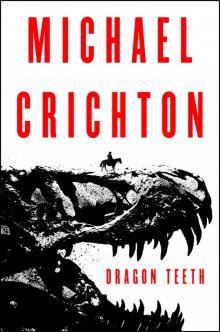 Dragon Teeth
Dragon Teeth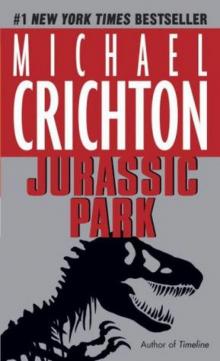 Jurassic Park
Jurassic Park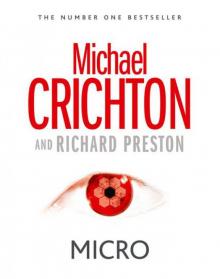 Micro
Micro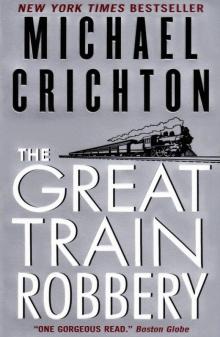 The Great Train Robbery
The Great Train Robbery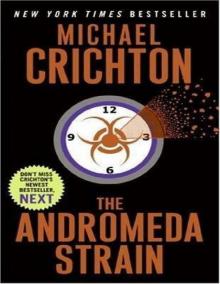 The Andromeda Strain
The Andromeda Strain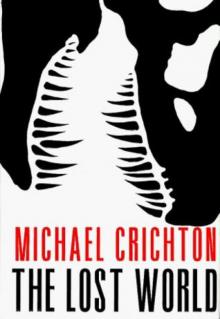 The Lost World
The Lost World Congo
Congo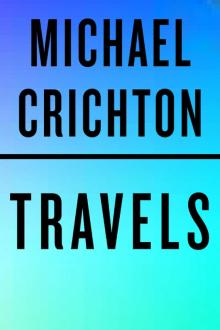 Travels
Travels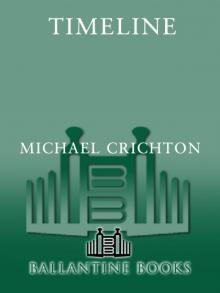 Timeline
Timeline Sphere
Sphere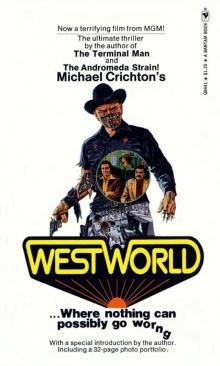 Westworld
Westworld Prey
Prey State Of Fear
State Of Fear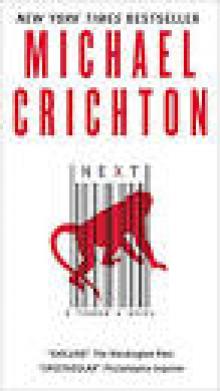 Next
Next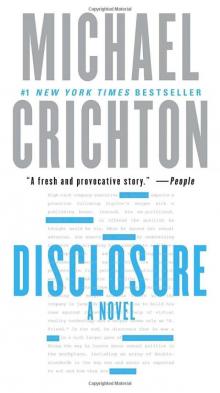 Disclosure
Disclosure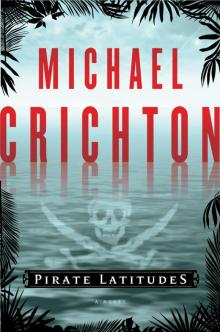 Pirate Latitudes
Pirate Latitudes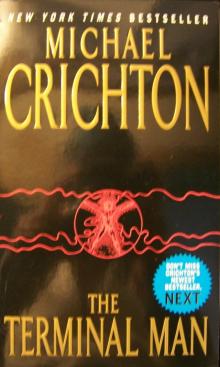 The Terminal Man
The Terminal Man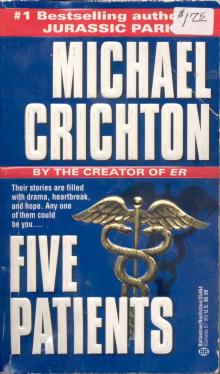 Five Patients
Five Patients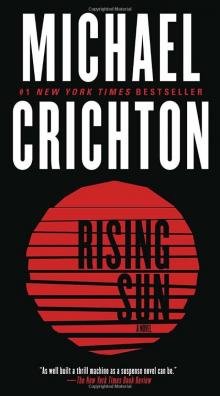 Rising Sun
Rising Sun Binary
Binary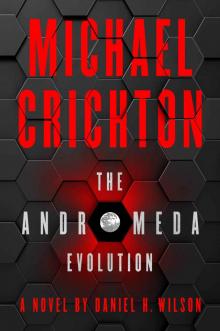 The Andromeda Evolution
The Andromeda Evolution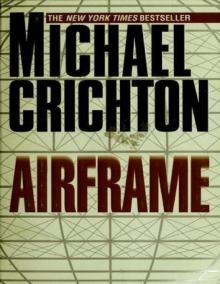 Airframe
Airframe Easy Go
Easy Go Drug of Choice
Drug of Choice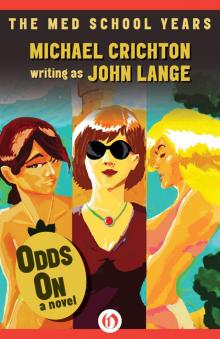 Odds On: A Novel
Odds On: A Novel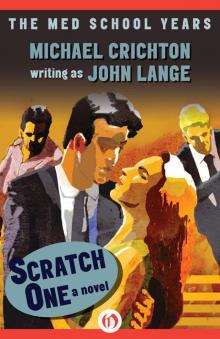 Scratch One
Scratch One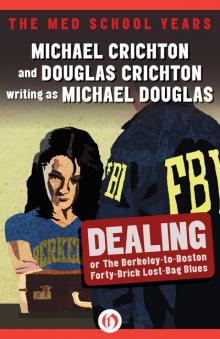 Dealing or The Berkeley-to-Boston Forty-Brick Lost-Bag Blues
Dealing or The Berkeley-to-Boston Forty-Brick Lost-Bag Blues Venom Business
Venom Business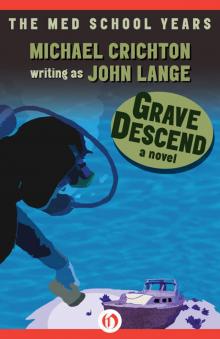 Grave Descend
Grave Descend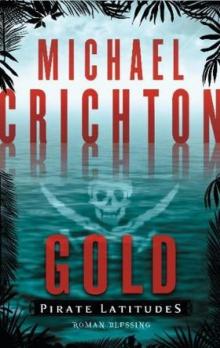 Gold - Pirate Latitudes
Gold - Pirate Latitudes Binary: A Novel
Binary: A Novel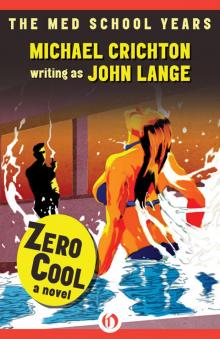 Zero Cool
Zero Cool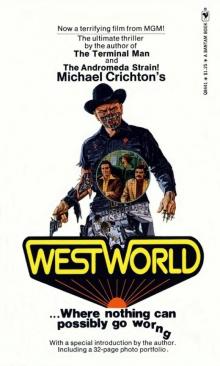 Delos 1 - Westworld
Delos 1 - Westworld